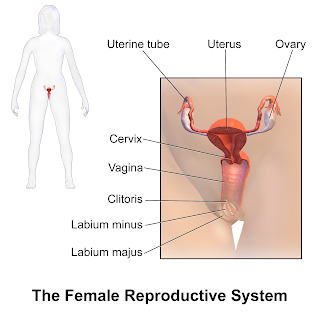Uterine fibroids, also known as leiomyomas, are non-cancerous growths that develop in the uterus. These growths are quite common, with many women experiencing them at some point in their lives. Although uterine fibroids are generally benign, they can cause discomfort and may lead to various health issues. In this article, we will explore the causes, symptoms, and treatment options for uterine fibroids.
What Causes Uterine Fibroids?
The exact cause of uterine fibroids is not fully understood. However, hormonal fluctuations, particularly an excess of estrogen, are believed to play a significant role in their development. Family history and genetics can also contribute to the likelihood of developing fibroids. Other risk factors include obesity and early-onset menstruation.
 |
| image source Wikipedia |
Common Symptoms
While some women with uterine fibroids may experience no noticeable symptoms, others may face various uncomfortable or disruptive effects. Common symptoms of uterine fibroids include:
a) Heavy or Prolonged Menstrual Bleeding: Fibroids can cause heavier and longer periods, leading to anemia in severe cases.
b) Pelvic Pain and Pressure: Large fibroids can put pressure on surrounding organs, causing pelvic pain or discomfort.
c) Frequent Urination: Fibroids pressing on the bladder can lead to a frequent need to urinate.
d) Constipation and Bloating: Fibroids can exert pressure on the intestines, causing constipation and bloating.
e) Painful Intercourse: Fibroids can make sexual intercourse painful or uncomfortable.
f) Abdominal Enlargement: In some cases, fibroids can cause the abdomen to enlarge, giving the appearance of pregnancy.
Diagnosis and Medical Evaluation
If a woman experiences symptoms that may indicate the presence of uterine fibroids, a healthcare provider will perform a pelvic examination and may request additional tests. Imaging techniques such as ultrasound, MRI, or hysteroscopy can help confirm the presence of fibroids and assess their size and location. A complete medical evaluation will help determine the appropriate treatment approach.
Treatment Options
The treatment for uterine fibroids depends on factors such as the severity of symptoms, the size and number of fibroids, and the patient's age and reproductive plans. Treatment options include:
a) Watchful Waiting: If fibroids are small and not causing significant symptoms, a "watchful waiting" approach may be adopted, with regular monitoring to assess any changes.
b) Medications: Hormonal medications, such as birth control pills or GnRH agonists, can help control hormone levels and reduce fibroid size.
c) Non-invasive Procedures: Minimally invasive procedures, such as uterine artery embolization (UAE) or MRI-guided focused ultrasound surgery (FUS), can shrink fibroids without the need for surgery.
d) Surgical Options: In cases of larger or more symptomatic fibroids, surgical procedures like myomectomy (removal of fibroids) or hysterectomy (removal of the uterus) may be considered.
Uterine fibroids are a common health concern for many women, and understanding their causes, symptoms, and treatment options is crucial for effective management. If you suspect you have uterine fibroids or experience any concerning symptoms, seek medical evaluation and advice. With the right approach and medical support, most women can effectively manage fibroids and lead a healthy, comfortable life.


No comments:
Post a Comment